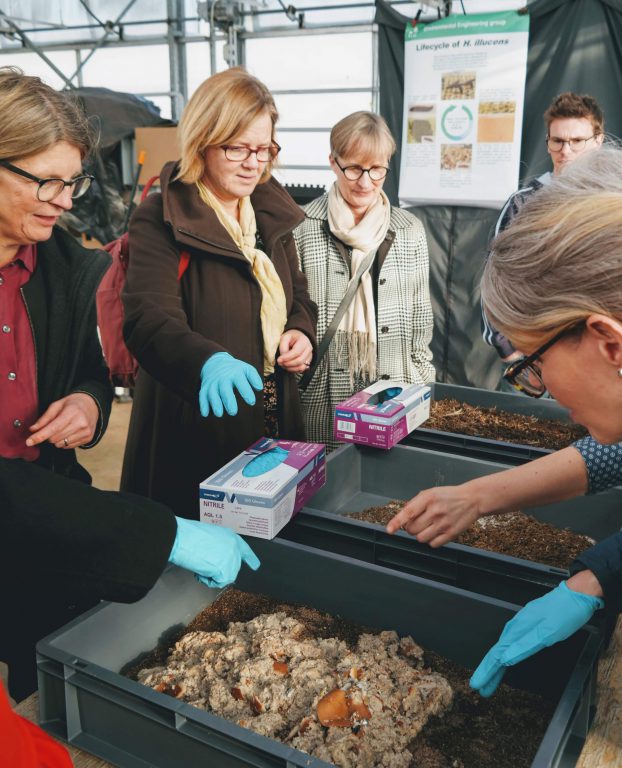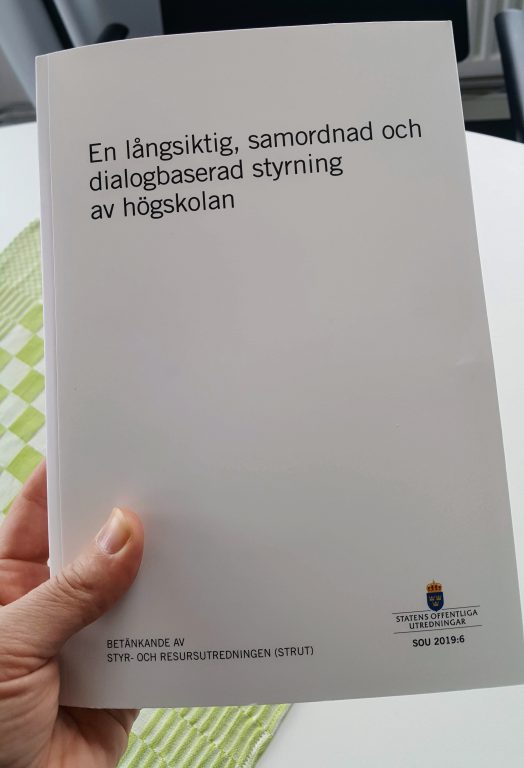English version below
Denna vecka sammanträdde universitetsstyrelsen. Den fråga som engagerar styrelsen mest är SLU:s arbete för att göra universitetet attraktivt för den unga generationen. Styrelsen beslutade enhälligt, och med entusiasm, att stödja utbildningsnämndens visionsarbete såsom det uttrycks i den färdplan som utbildningsnämnden antagit. Vi fick konstruktiva kommentarer kring arbetet och bland annat uppmärksammades att flera styrelseledamöter uppvaktas av representanter från de gröna näringarna, med önskemål om att involveras mer i vårt ”fördubblingsprojekt”. Det är roligt och viktigt med engagemang från externa intressenter! Vi får hjälpas åt att ta hand om det på bästa sätt. SLU har bland annat regelbundna ledningsmöten med LRF, Lantmännen, Skogsindustrierna, Jordbruksverket, Skogsstyrelsen, med flera, och då kommer ofta utbildningsfrågor upp. Våra programnämnder har löpande möten med näringen och den 10 april har utbildningsnämnden bjudit in externa intressenter till runda bords-samtal om fördubblingsprojektet. SLU har med andra ord många kontaktytor med omvärlden där vi diskuterar utbildningsfrågor och det är viktigt att vi tillsammans tar till vara på det engagemang som finns.
Det har blivit en del diskussion om begreppet vision, så jag vill påminna om hur fördubblingsprojektet började och hur jag vill att visionen ska uppfattas. När SLU firade 40 år, år 2017, så hölls födelsedagsseminarier vid våra tre stora campus. I mitt tal om SLU:s utbildningar så formulerade jag en personlig vision – att när SLU fyller 50 år, år 2027, ska vi kunna säga att SLU:s studentpopulation är fördubblad – därför att den behövs – och att den speglar mångfald i den unga generationen. Uttrycket väckte intresse och engagemang och blev snabbt hela SLU:s vision.
Min syn på en vision är att det är ett redskap för att få igång en positiv rörelse, engagemang och energi. Den ska vara högt ställd, och det viktigaste är inte att nå hela vägen fram eller precis vid utsatt tidpunkt, men att se att vi kommer en god bit på väg och att vi rör oss i önskad riktning. Det kan ur det perspektivet jämföras med Trafikverkets noll-vision, Agenda 2030-målen och Sveriges klimatmål 2045. Visionen ska inte heller tolkas som att den ska nås till vilket pris som helst. Ett lyckat brett internt utvecklingsarbete – en kulturförändring – och nya resurser ifrån vår uppdragsgivare, regeringen, är två av förutsättningarna för den här visionen. Jag är fortfarande lika övertygad om att samhället behöver fler studenter från SLU och att vi kommer få utökade resurser när vi visar att vi får fler studenter. Med en större budget för utbildning kan vi också anställa fler universitetslektorer och fler av våra forskare kan engageras i utbildningen.
Vår styrelse har i år beslutat om extra resurser till utbildningsnämnden, till strategiska investeringar som stödjer visionen. Det är nu vi har möjligheter att initiera och driva ett långsiktigt och tålmodigt förändringsarbete, som på sikt ska leda till fler studenter till våra utbildningar. Utbildningsnämnden kan inte arbeta isolerat, vi behöver allt stöd och engagemang vi kan få från fakulteter, institutioner, enskilda medarbetare, alumner och potentiella arbetsgivare. Det är spännande och stimulerande tider!
Karin Holmgren, rektor
Valuable commitment to SLU education
Last, week, the SLU Board had a meeting. The hottest issue on the agenda was SLU’s work with making the university an attractive prospect for younger generations. Therefore, the SLU Board decided – unanimously, and enthusiastically – to support the Board of Education’s vision work, which is expressed in its approved road map. We received several constructive comments about this work, and among other things, it was emphasised that many board members have been contacted by representatives from the land-based sector who want to get more involved in the project to double our number of students. It’s great and important that external parties show commitment to this project. We have to work together to utilise this in the best manner. Among other things, SLU has regular management meetings with the Federation of Swedish Farmers (LRF), Lantmännen, the Swedish Forest Industries Federation, the Swedish Board of Agriculture, the Swedish Forest Agency, etc. During these meetings, education issues are often discussed. Our programme boards also have regular meetings with businesses. On 10 April, the Board of Education has invited external stakeholders for round-table discussions on the doubling project. In other words, SLU has several different forms of contact with the outside world where we discuss education issues and where it’s important that we jointly utilise the commitment shown to us.
Since the concept of “vision” has been discussed of late, I want to remind you of how the project to double our students began and how this concept should be viewed. When SLU celebrated its 40th anniversary in 2017, there were celebratory seminars at our three large campuses. When making a speech about SLU education, I formulated a personal vision: When SLU turns 50, in 2027, we should be able to say that the number of SLU students has doubled – because it needs to – and because it reflects diversity in younger generations. This statement raised a lot of interest and commitment, and quickly became a vision for the whole of SLU.
To me, a vision is a tool to raise a positive moment, commitment and energy. It must be ambitious, and the most important thing is not to meet the objective completely or at an exact date, but to ensure that you’ve come a long way and are moving in the right direction. It can be compared to the Swedish Transport Administration’s “Vision Zero”, the UN’s Sustainable Development Goals and The Swedish Climate Policy Framework. Additionally, the vision should not be interpreted as reaching its objectives regardless of the cost. We need successful, broad, internal development work – a change of culture – and new resources from the government; these are just two of the prerequisites we need for this vision to come true. I’m still convinced that society needs more SLU students and that we will be given more resources when we show that out student numbers have increased. With a larger education budget, we can also employ more senior lecturers and more of our researchers can get involved in education.
This year, the SLU Board decided to give extra resources to the Board of Education, for more strategic investments to support our vision. We now have the opportunity to initiate and run long-term and patient change management. In the long run, this will lead to more students in our courses and programmes. The Board of Education cannot work alone – we need all the support and commitment we can get from our faculties, departments, employees, alumni and potential employers. These are indeed exciting and stimulating times!
Karin Holmgren, Vice-Chancellor


